
The British Geological Survey reported that as of 2005, Koderma District in Jharkhand state of India had the largest deposits of mica in the world. We are located in this heart of mica producing area of India, just about 80 Kms from Koderma District and take pride in a world-class factory set-up way back in 1978 for manufacture of high-quality and high-precision mica splittings and mica paper based insulating materials.
MICA SPLITTINGS
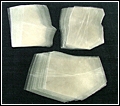
Mica has the unique natural property of being split into very thin sheets, sheets as this as 0.0002 to 0.0003 inches without any crack or breakage. Mica splittings are processed from lower grade and quality of block and thin mica by a highly skilled labor work force available in our region for many generations now. The required thickness is split by highly skilled hand process as no mechanical process has been developed to do this job yet!
Since time immemorial Indian mica producers have been using a particular system of grading and classifying muscovite mica splittings which have been universally accepted in the international trade. While the standard grading system is followed based on the maximum usable area (rectangle) that can be cut from the specimen as depicted in the adjacent table the quality is evaluated on the basis of physical impurities and structural imperfections namely: free from stains, spots, uniformity of thickness, contour of edges etc. Most widely used is the Muscovite mica splittings which RD offers in different forms and qualities as per the following:
Ruby or Green Book Form Splittings – 1st Quality – This particular grade of mica splittings shall be of clear quality and free from mineral stains and/or black spots.
Ruby or Green Book Form Splittings – 2nd Quality – This particular grade of mica splittings is quite similar to the above grade with the exception that it may contain vegetable stains but however they shall be free from mineral stains and/or black spots.
Spotted Book Form Splittings – 1st Quality - This particular grade of mica splittings is quite similar to the above grade with the exception that it may contain black spots and/or stains but however they shall be free from red/copper stains.
Spotted Book Form Splittings – 2nd Quality - This particular grade of mica splittings is quite similar to the above grade with the exception that it may contain heavy black spots and stains but however they shall be free from red/copper stains.
Red/Copper Stained Book Form Splittings - This particular grade of mica splittings is quite similar to the above grade with the exception that it may contain heavy black spots and red/copper stains.
RD offers muscovite dusted loose splittings in the following commercial qualities:
Ruby or Green Dusted Loose Splittings – This particular grade of mica splittings shall be of clear quality and free from mineral stains, black dots and/or spots and not more than 5% of the mica splittings shall be slightly vegetable stained.
Spotted Dusted Loose Splittings - This particular grade of mica splittings is quite similar to the above grade with the exception that it may contain black spots and/or stains but shall be free from red/copper stains.
Red/Copper Stained Dusted Loose Splittings - This particular grade of mica splittings is quite similar to the above grade with the exception that it may contain black spots, red/copper stains and clay spots.
Tolerances: A tolerance of 10% by weight for next smaller sizes, quality, thickness variations and other defects such as V-Cuts and strip pieces, cracks and scratches, waves and air inclusions etc shall be considered as normal and are permissible in all grades and qualities of muscovite mica splittings. However such defects shall not predominantly lie in any one category.
![]() STANDARD GRADING TABLE FOR MUSCOVITE MICA SPLITTINGS
STANDARD GRADING TABLE FOR MUSCOVITE MICA SPLITTINGS
MICA BLOCKS
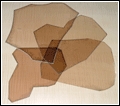
From the beginning of the trade, Indian mica producers have been following IS 1175 system of size grading and classification of muscovite mica which is widely accepted in international trade of mica world over even today. As per IS 1175 specification the grading for all full trimmed muscovite mica is done based on the maximum usable rectangle area that may be cut from the specimen and not on the total area. The below table shows the grading for muscovite mica blocks, thins and films.
![]() STANDARD GRADING TABLE FOR MUSCOVITE MICA BLOCKS, THINS AND FILMS as per IS 1175
STANDARD GRADING TABLE FOR MUSCOVITE MICA BLOCKS, THINS AND FILMS as per IS 1175
The mica industry is highly specialized which still follows a complex system of specifications and grading to classify a wide variety of qualities based on thicknesses, size and visual quality. Even today there is no mechanized system by way of which quality classification of mica can be done. The determination of mica quality therefore is still done by the age old practice of visual examination where the technical suitability is assessed on the basis of appearance.
In this age old system of visual examination of mica undue emphasis is laid on clarity, color, flatness, hardness and freedom from spots, stains, visible inclusions and structural imperfections etc. However these is no established co-relation of their visual properties vis-à-vis their electrical properties and performance requirements for different end uses.
As a result of this practice widely followed across the mica trade worldwide, a lot of good mica is rejected or graded in the lower class resulting in considerable loss of value. Due to lack of well-established theory on actual electrical properties of mica importers and end users often prefer to buy superior quality mica at higher price to avoid the risk of using mica which may look inferior by visual test.
However with passage of time and with some research conducted it has been established that visually appearing lower grades of mica often have performance merit equal or even superior to the higher ones. Though paradoxical it may sound some poorer classes of mica have been found to possess better dielectric strength and resitivity value more than those of higher grades.
Mica slabs as they come out of the mines usually contain mineral inclusions such as mineral or vegetable stains, black or red spots etc because of the pressure of iron oxide and clay. Black or red spots and/or stains are often a result of radiation damage from included zircons which contain radio active chemical elements. However these minerals or vegetable stains or black or red spots/stains either totally disappears or is largely reduced when mica is split into thinner sheets. The mineral inclusions often cause reduction in dielectric resistance of mica and raise its power factor.
According to the present system of visual quality classification a sheet perfectly clear, transparent, hard, flat, free from all stains, spots, air-bubbles and other physical defects and impurities is considered to be the finest quality of mica which these days is not very easily available. However due to our association with the mica industry for over five decades now we have a excellent control over the supply chain and have some unique sourcing strategies which help us source the best possible mica though prices are increasing by the day.
Given below is a brief description based on the visual classification of Muscovite mica blocks, thins and films as adapted by IS 1175 and followed by our company:
V-2 Ruby Clear and Slightly Stained
These are the standard grades that are more widely available and used. However other grades of mica blocks are also offered by our company such as:
- V-7 Ruby Stained B Quality
- V-8 Ruby BQ
- V-9 Ruby Heavy Stained
- V-10 Ruby Densely Stained
- V-11 Black Dotted
- V-12 Black Spotted (Or Spotted 1st Quality)
- V-13 Black / Red Stained (Or Spotted 2nd Quality)
- V-14 Green / Brown First Quality
- V-15 Green / Brown 2nd Quality
- V-16 Green / Brown Stained or BQ
PS: Samples or their description are available on special request
As ISI has rightly stated in their standard that:
“The quality classification of muscovite mica being based on visual tests depends on individual opinion. Also products of different mines vary in physical characteristics to such an extent that the development of a single standard with reasonable limits of tolerance becomes an acutely difficult task. Added to these difficulties are the facts that quality classification has to be carried out by a large number of individual workers and that it is highly influenced by such circumstantial factors as lighting conditions etc. Under these circumstances any standard for quality classification of mica can give at best an approximate idea of a particular quality and its reactive position with respect to other qualities.”
In light of the above scenario it becomes imperative for us to work closely with our customers, clearly understanding their requirements and thereafter doing our very best to process and supply them with the best quality mica that can be made available at the given time. Our years of practical experience and high skill of our experienced work force have given us a cutting edge in processing of quality mica which we offer and supply to our valued customers.
![]() QUALITY CLASSIFICATIONS OF MUSCOVITE MICA BLOCKS AND THINS BASED ON VISUAL PROPERTIES
QUALITY CLASSIFICATIONS OF MUSCOVITE MICA BLOCKS AND THINS BASED ON VISUAL PROPERTIES
MICA SCRAP
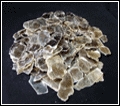
Scrap mica obtained in course of cobbing, rifting and dressing crude mica as extracted from the mine by means of a sickle as well as recovered by means of hammer-crushing cross-grained mica which cannot be used as sheet mica for commercial purposes is classified as mine scrap. It is screened over 1.9 square cm (or 0.75 square inch) openings and have an average size between 25-50 mm (1-2 inches) and thickness ranging between 0.25 – 1.25 mm (0.010-0.060 inches).
RD offers mine scrap that is clean, dry, hard, free from mineral and non-mineral impurities such as Quartz, feldspar, garnet, tourmaline, stones, mud-stained or biotite mica, clay, sane as well as other foreign inclusions viz: paper, wood leaves, straw, jute strings, nails or any other iron-contents etc.
Mine scrap is primarily used as raw material for ground mica for industrial uses such as paints electrodes etc and for manufacturing of mica paper or reconstituted mica as a basic raw material.
MICA FLAKES
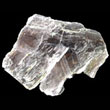 Mica flakes is mica scrap grinded into sizes ranging from 2 mesh to 30 mesh. Grinded into various sizes from pure muscovite mica, natural mica flakes are greatly sought after by industries involved in manufacturing of pearlescent pigment, concrete block fillers, oil well drilling, Christmas ornaments and display materials, refractory bricks, asphalt roofing felts, metals explosives and disinfectant etc.
Mica flakes is mica scrap grinded into sizes ranging from 2 mesh to 30 mesh. Grinded into various sizes from pure muscovite mica, natural mica flakes are greatly sought after by industries involved in manufacturing of pearlescent pigment, concrete block fillers, oil well drilling, Christmas ornaments and display materials, refractory bricks, asphalt roofing felts, metals explosives and disinfectant etc.
RD offers mainly three types of mica flakes as per demand of our customers namely:
This type of mica flake finds is typical use in oil well drilling, artificial snow, pearlescent pigment and similar such applications.
This type of mica flake finds its frequent use in Christmas ornaments, display materials and similar such applications.
GAUGE GLASS MICA / MICA SHIELDS
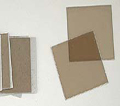 Good quality mica shields provide the best possible protection to flat and transparent sight glasses in water and liquid level gauges and columns in high pressure steam boilers, high pressure boiler gauge glass kits etc. The shields retain their basic natural strength and increase the service life of sight glasses even when used at high steam pressure and high working temperatures besides providing perfect visibility for monitoring the nature or degree of combustion in blast furnaces of steam boilers.
Good quality mica shields provide the best possible protection to flat and transparent sight glasses in water and liquid level gauges and columns in high pressure steam boilers, high pressure boiler gauge glass kits etc. The shields retain their basic natural strength and increase the service life of sight glasses even when used at high steam pressure and high working temperatures besides providing perfect visibility for monitoring the nature or degree of combustion in blast furnaces of steam boilers.
Natural mica has extremely high heat resistance, transparency, optical clarity, flexibility, flatness and is unbreakable. The transparency of mica is not affected by the repeated fluctuations in heating and cooling of the boilers and is not affected by most of the gases and vapor that it comes into contact with. In addition mica resists shocks, strains and vibrations and therefore can easily be used in place of glass where there is a likelihood of exposure to radiant heat, breakage or cracking. As steam boilers are frequently shut-down and started up again, this places extreme demands on the transparent glasses fitted between CAF sealing gaskets and cushion joints of the level gauges. It is therefore imperative to protect these glasses with good quality mica shields by fitting them on the side facing the medium chamber.
Mica shields are a must where saturated steam pressure exceeds 350 psi (up to 5689 psi) and working temperatures exceeds 196 Deg. C (up to 600 deg. C).
Mica shields also protect the inner surfaces of the transparent glasses against erosion from chemical abrasion and from corrosive chemical effects of alkaline solutions, boiler waters, caustics, hydrofluoric acids, hot concentrated phosphoric acids, sodium and potassium hydroxides and other contaminated viscous or corrosive media. It provides an excellent sealing strength against acids, sodium, water, air and oil at extreme pressures and temperatures and completely eliminates the risk of cracks, breakage, jerks, shocks, combustion effects, etc. In fact good quality mica shields serve effectively in closing the spy holes of observation doors of level gauges and columns.
Keeping in mind the critical working conditions where mica shields are used we make all efforts in supplying to our customers the highest quality of mica shields made from high quality muscovite mica sheets. Our company ensures that our mica shields are transparent and colorless and have a high degree of through vision transparency thus ensuring optimum visibility of the level gauges and columns. Our company can offer you shields in any desired length, width and thickness.
Customers can contact us to meet their specific requirements of mica shields or gauge glass mica and we guarantee you the purest product meeting high levels of international standards.
